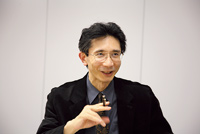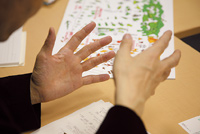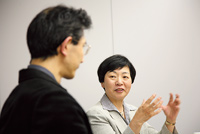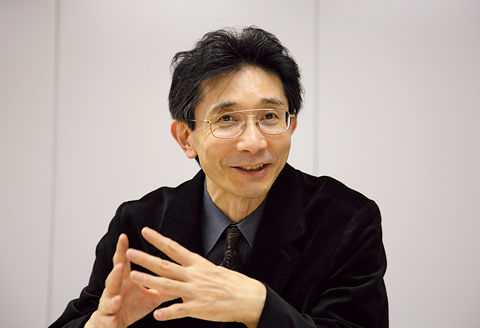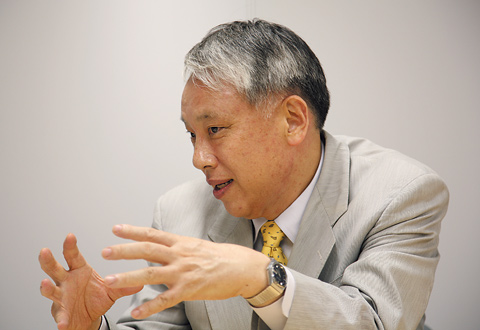| Biohistory journal, Autumn, 2006: Index > The combination of scholarship and daily life |
| 50th roundtable discussion On the future of the Biohistory Journal The combination of scholarship and daily life |
|
|
|
Considering the next step while keeping our attention on nature and civilization
Nakamura: Katsuki: Nishigaki: |
Machines of convenience, machines of continuity Katsuki: Nishigaki: Nakamura: |
Biological desire and social desire
Katsuki: Nakamura: Nishigaki: Nakamura: |
Scholarship in which thinking is performed with a self-referential independence
Nishigaki: Nakamura: Katsuki: Nakamura: |
Not scientific communication, but daily life Nishigaki: Nakamura: Katsuki: |
A society of organisms has come into view
Katsuki: Nakamura: Nishigaki: Katsuki: |
After the dialogue / Toru Nishigaki
Many people just willfully assume that they donít have a connection to life sciences, saying that theyíre poor at experiments, or that their academic discipline is the arts. When I was in junior high school and high school, I liked to study the sciences, but I was poor at biology. For me now, however, my knowledge about life is the most important of all as the basis for information studies. When I consider again that the different concepts appearing in Ms. Nakamuraís book, ďSelf-Creating LifeĒ, take information as their starting point, there are a countless number of places in which it overlaps with my book, ďBasic Information StudiesĒ. I donít know whether the words philosophy or thought are proper here, but my basic foundation is that we should reappraise the world in which humans operate based on a self-awareness of the phenomenon of life that sometimes appears in the evolutionary process. This roundtable discussion allowed me to get a real sense once again that the other participants share my ideas. Iíd like to create a foundation for living from the Biohistory Journal and Basic Information Studies. Toru Nishigaki Nishigaki was born in Tokyo in 1948, and graduated from the University of Tokyo with a degree in engineering. After working in R&D for computer software at Hitachi, he served as a professor at Meiji University before being named to his present position. His fields of concentration are information engineering and the theory of the information society. He has written many books, including Digital Narcissus and Basic Information Studies. He is also a novelist, and his works include The Maria in 1492 and An American Primer. |
After the dialogue / Motoya Katsuki
I said this several times during the dialogue, but living creatures are in a certain sense free, as long as they live based on the genomeís conditions of constraint. Biologists do nothing more than expend a great deal of effort to objectively confirm what living creatures do unconsciously. Because human beings are also living creatures that know their own conditions of constraint, this is connected to the wisdom to direct oneself away from an original instinct of moving like a machine. That might well be the most important aspect of human dignity. But weíre neglecting that today. Biology conducts research with that awareness, and is committed to social values. The JT Biohistory Research Hall does not preach that sermon; rather, its idea is to transmit that information in an enjoyable way as entertainment. I look forward to their continued activities in the future. Motoya Katsuki Born in 1943 in Fukuoka Prefecture, Katsuki received a masterís degree in science from the University of Tokyo. He withdrew from the Faculty of Sciences at Kyushu University after receiving the credits for a doctorís degree. After serving as a professor at the Center for Experimental Medicine at The Institute of Medical Science in the University of Tokyo, he was named to his present position in 2001. His fields of specialty are molecular biology and developmental engineering. He has contributed to the establishment of developmental engineering in Japan through such accomplishments as setting up research systems for silkworms and mice. |
| Dialogue |
Please close a window with the button of a browser who are turning off Javascript. |

